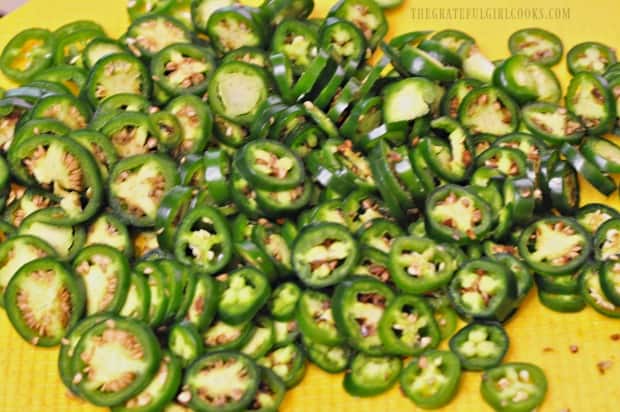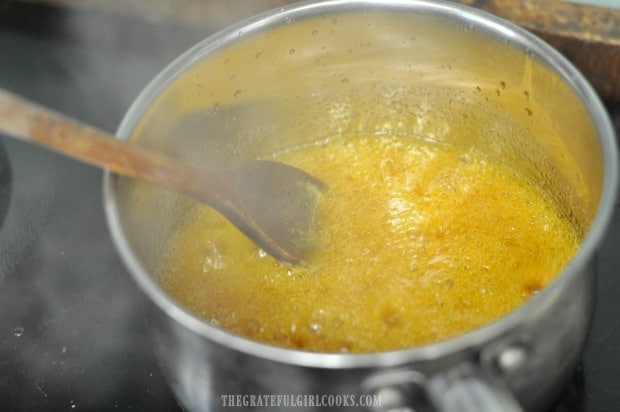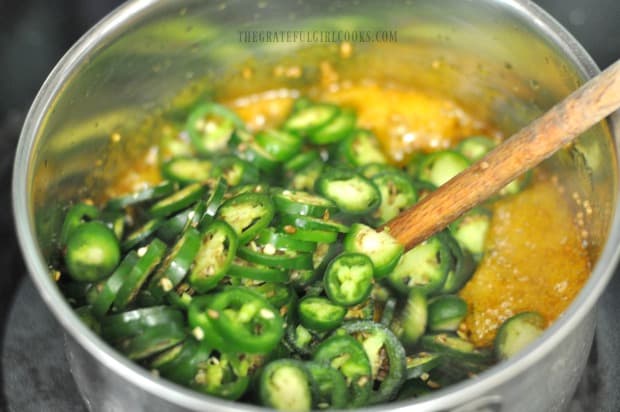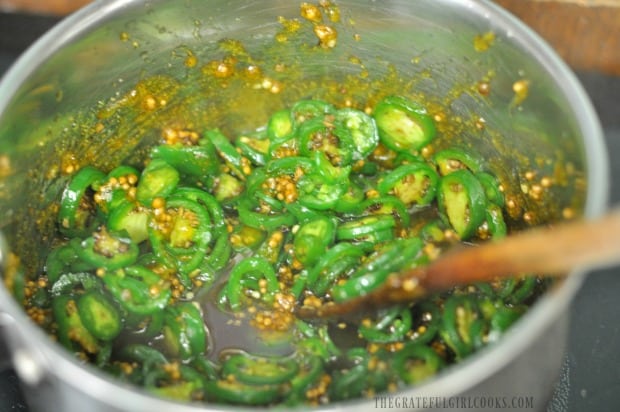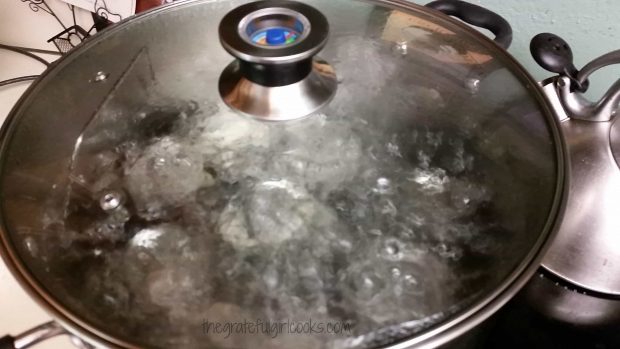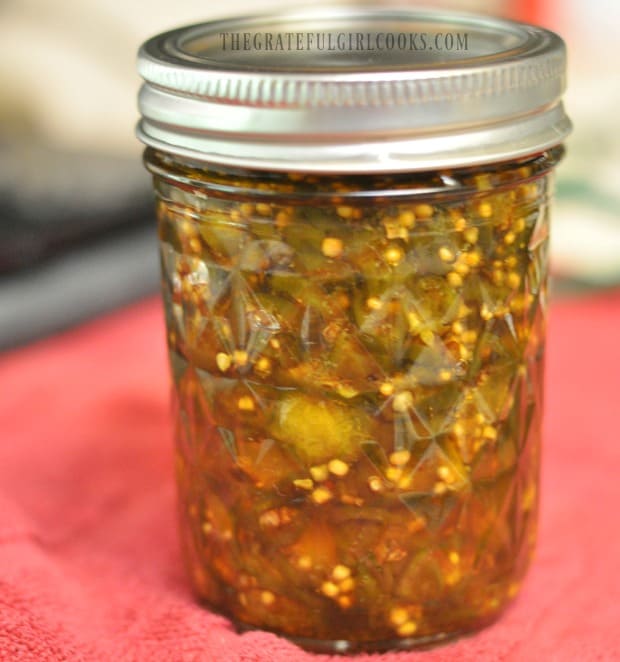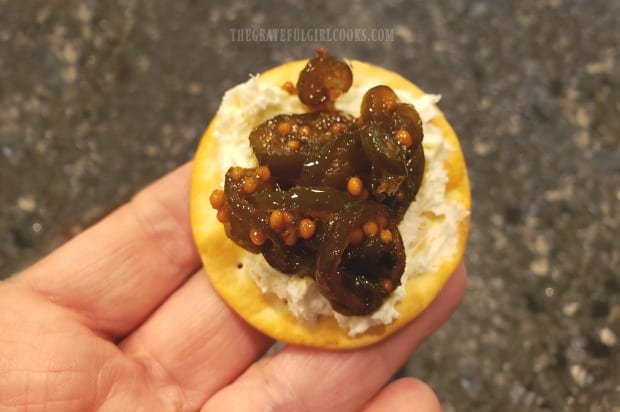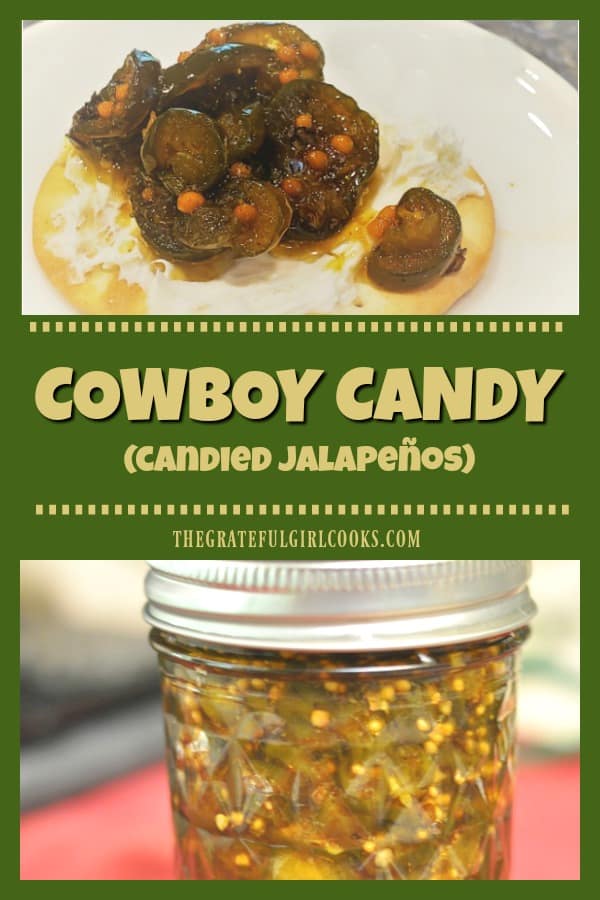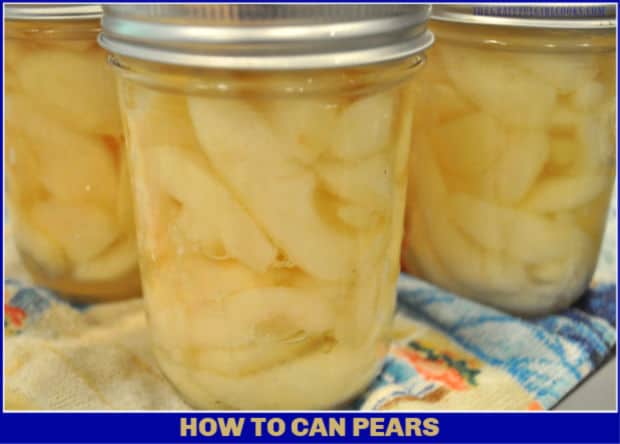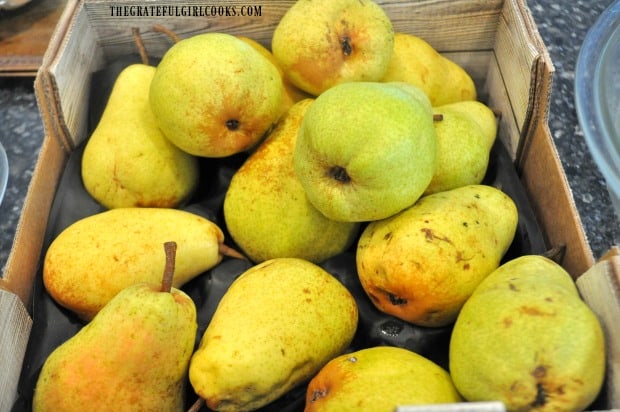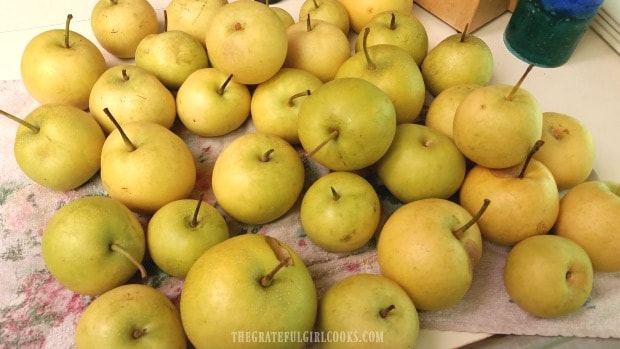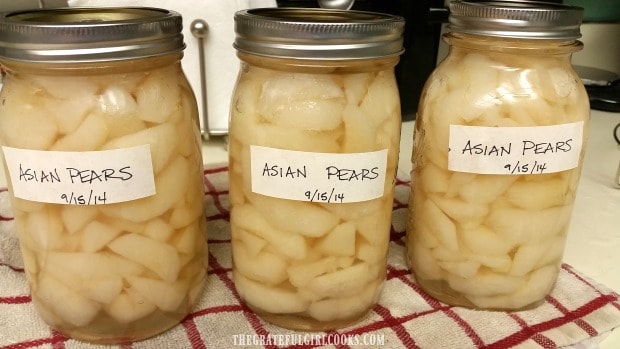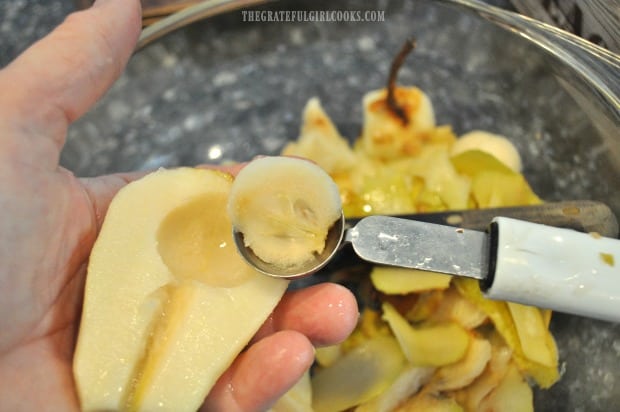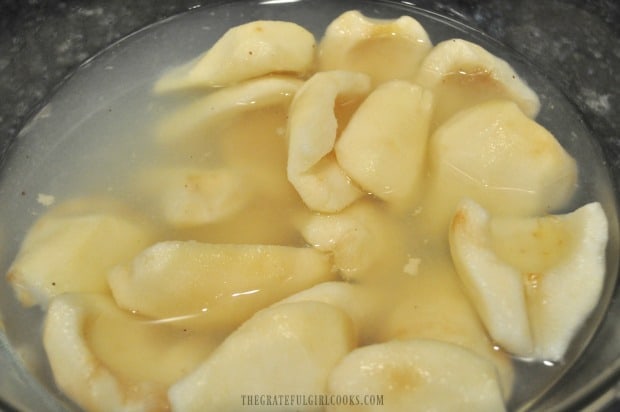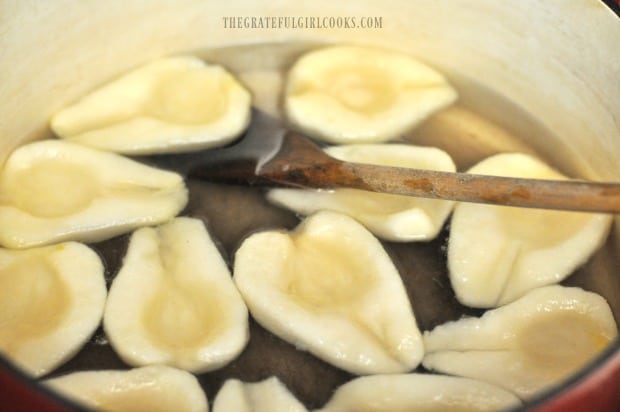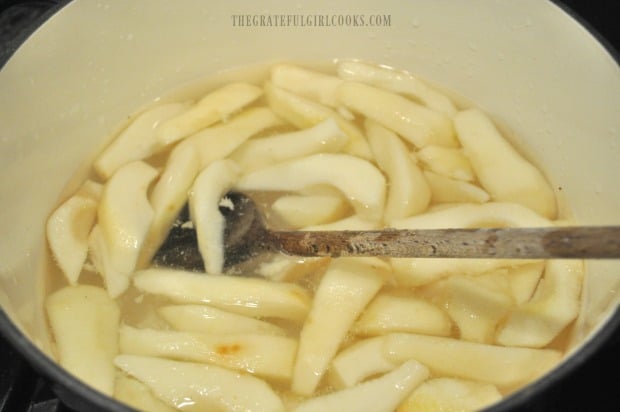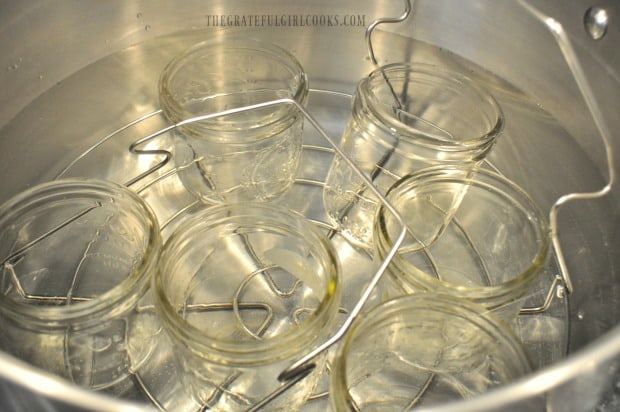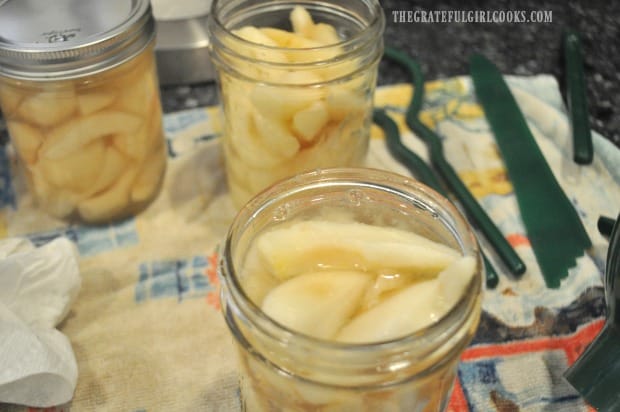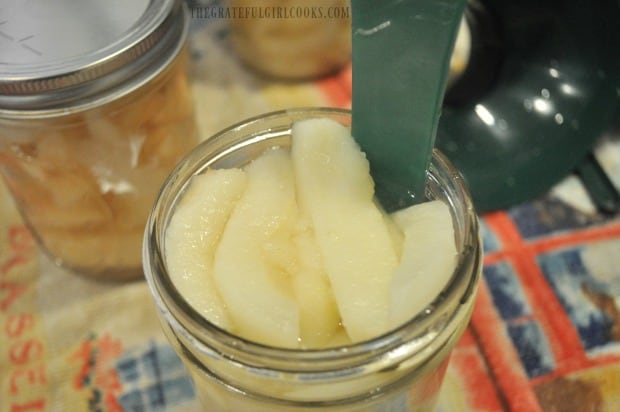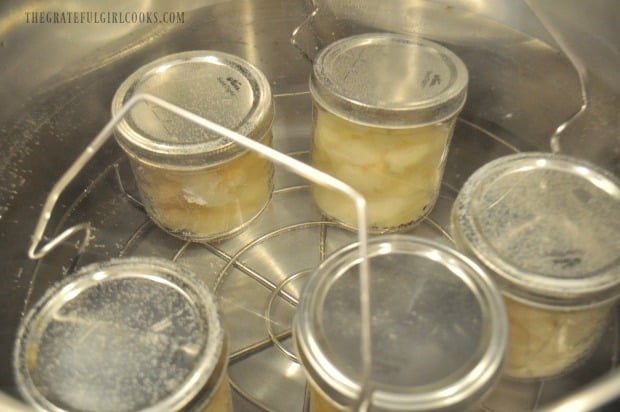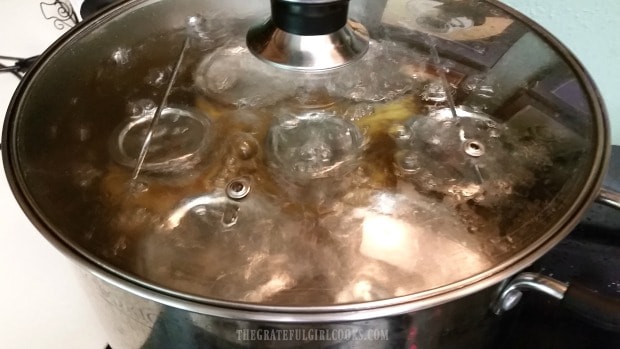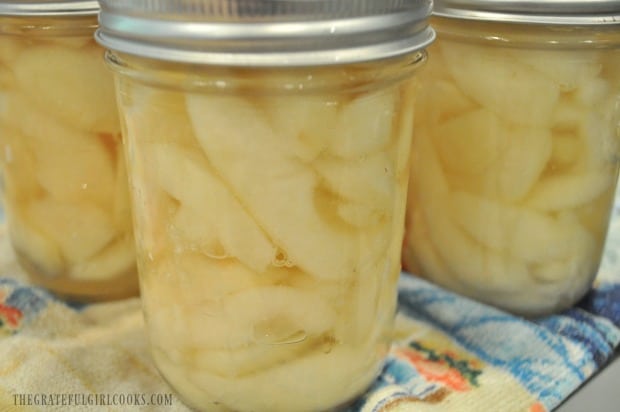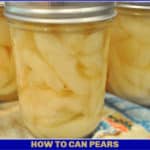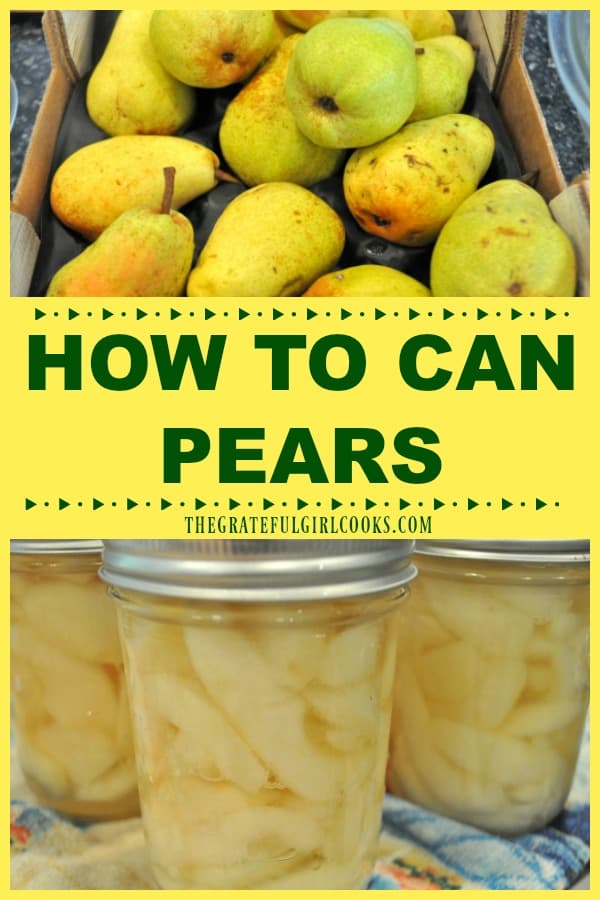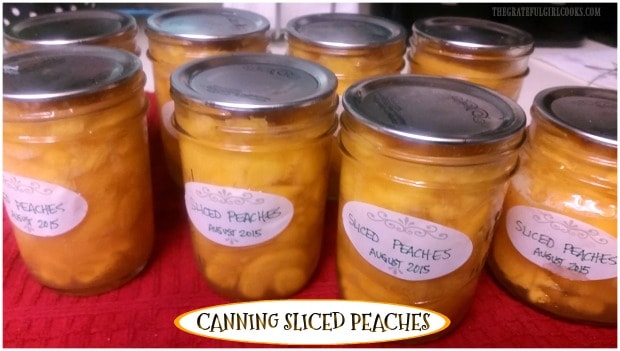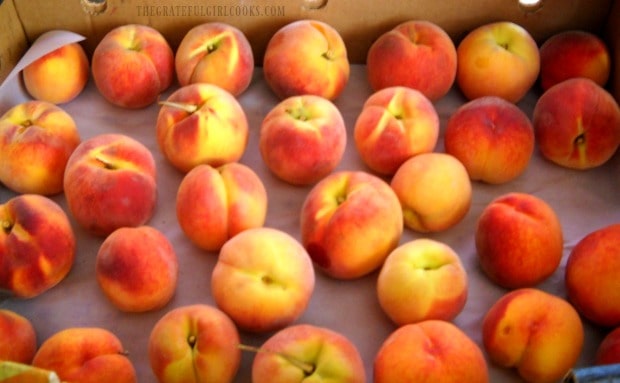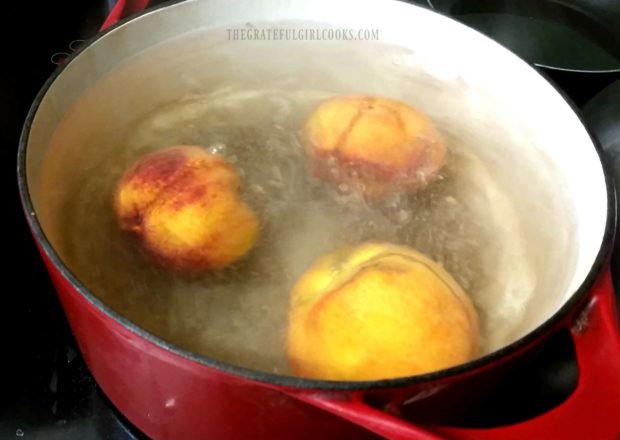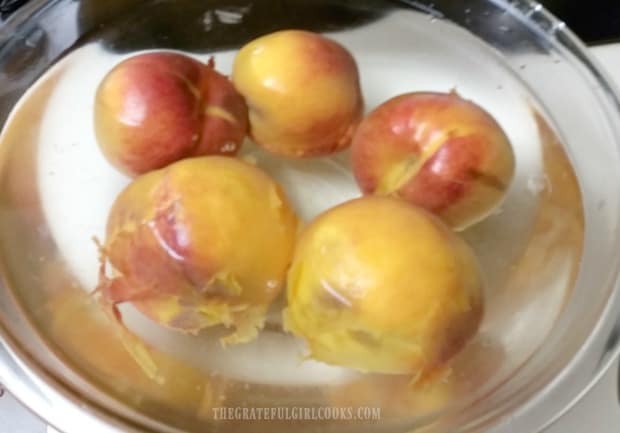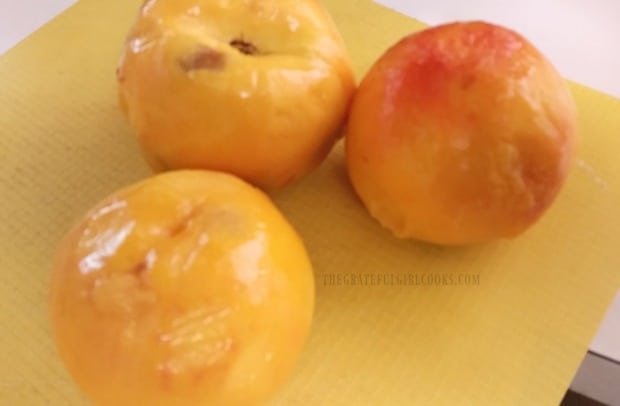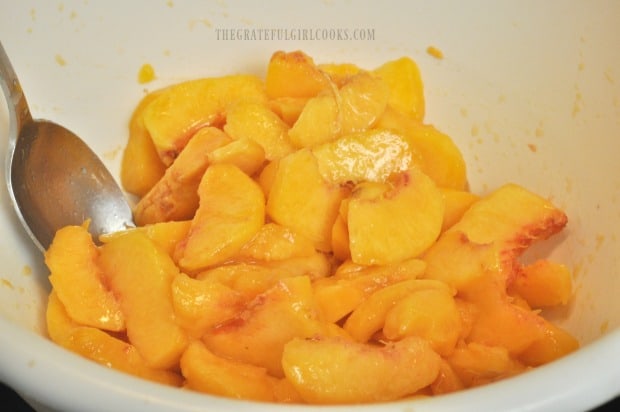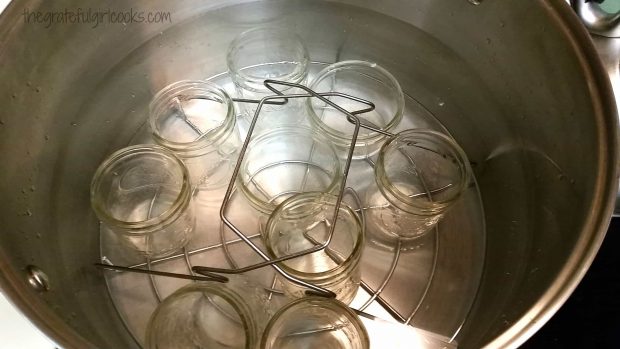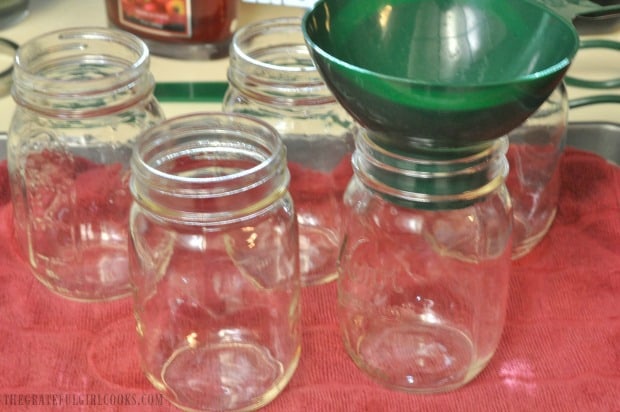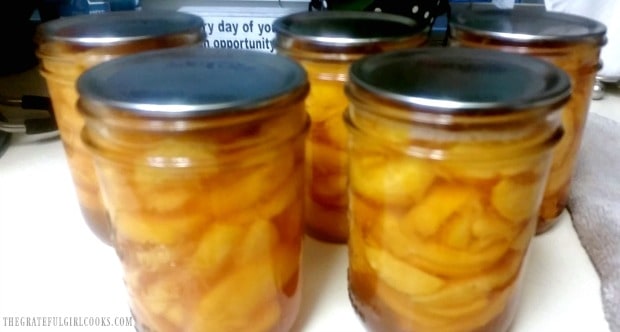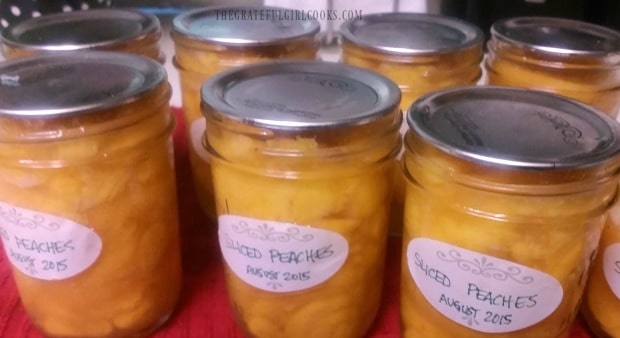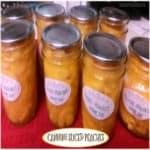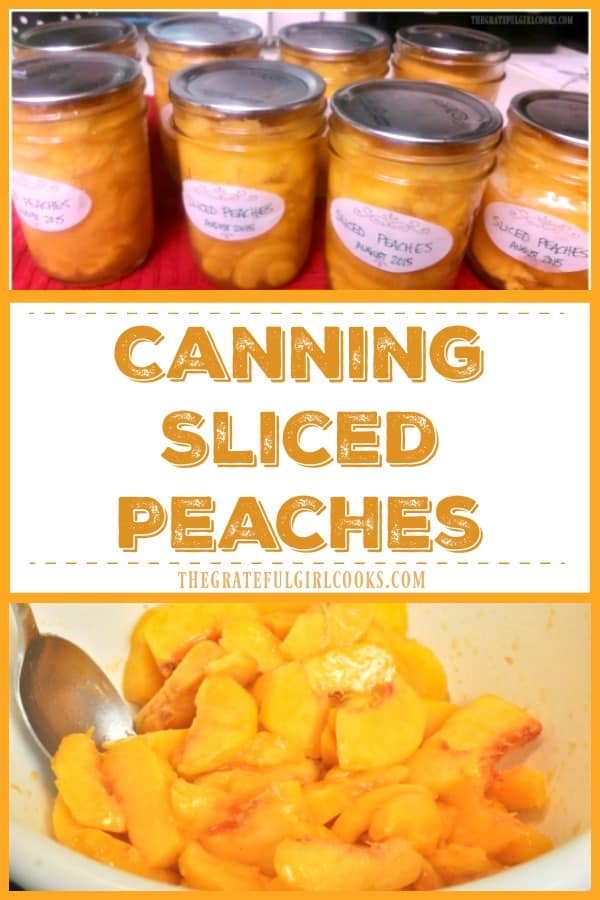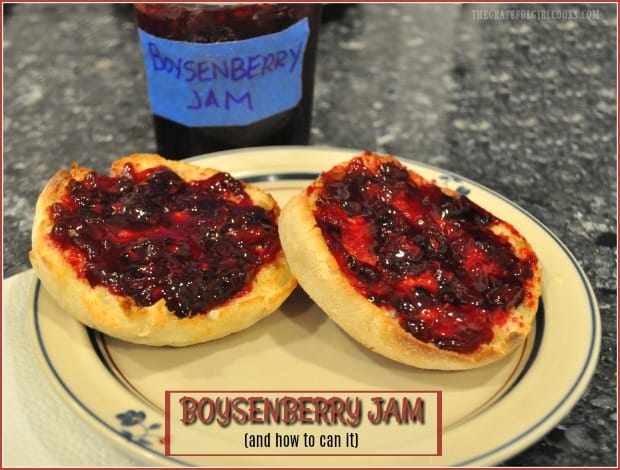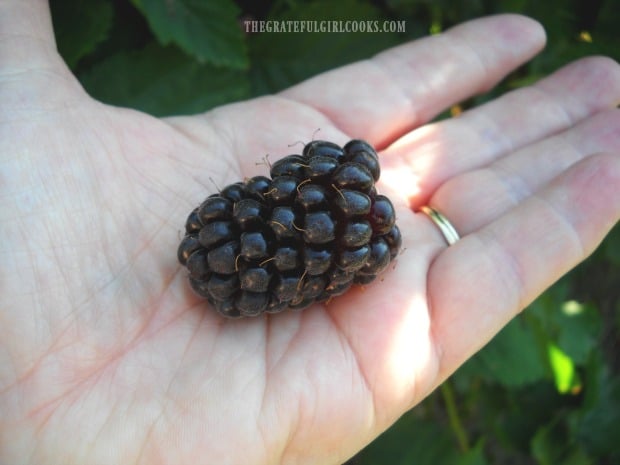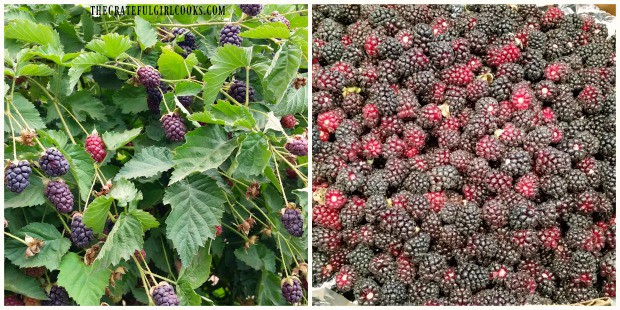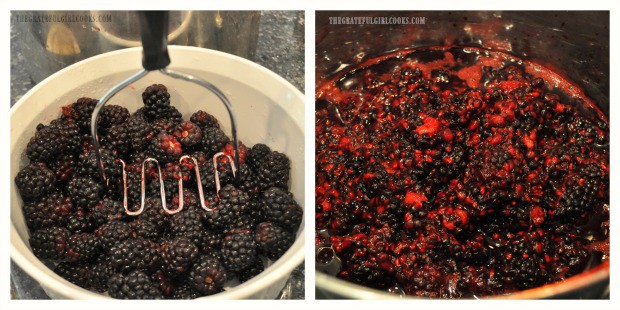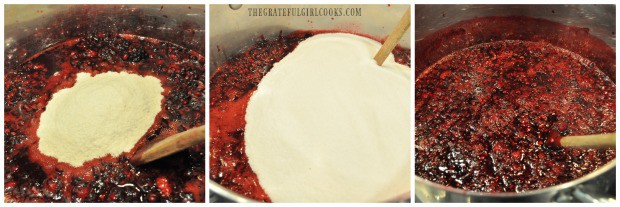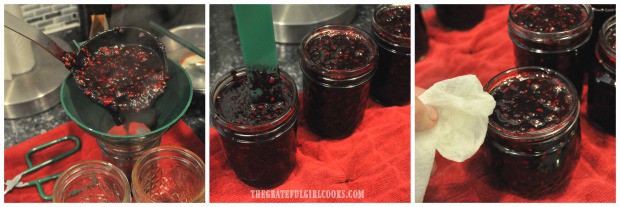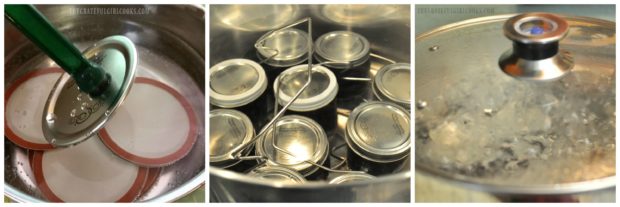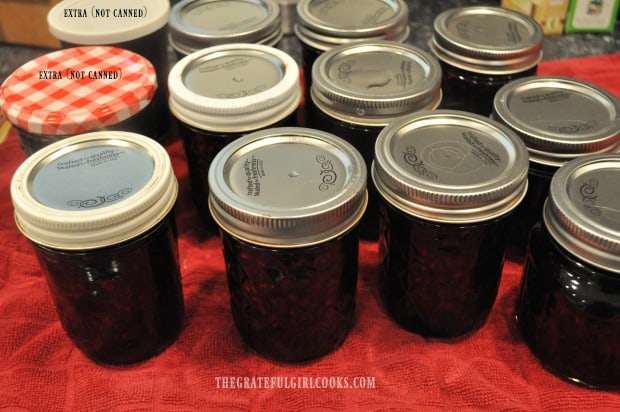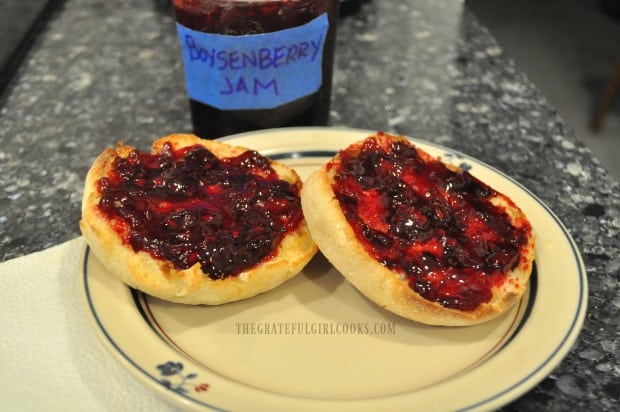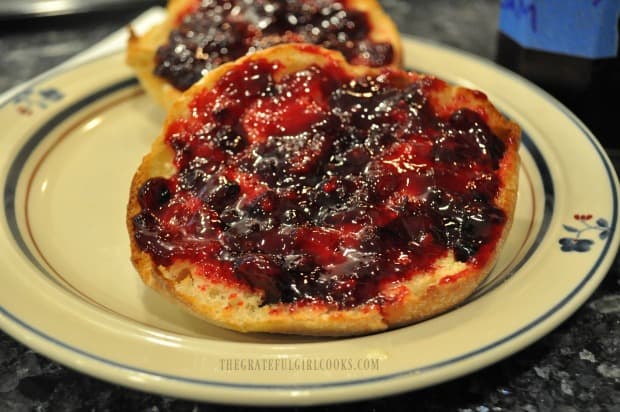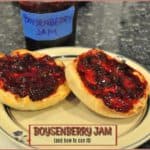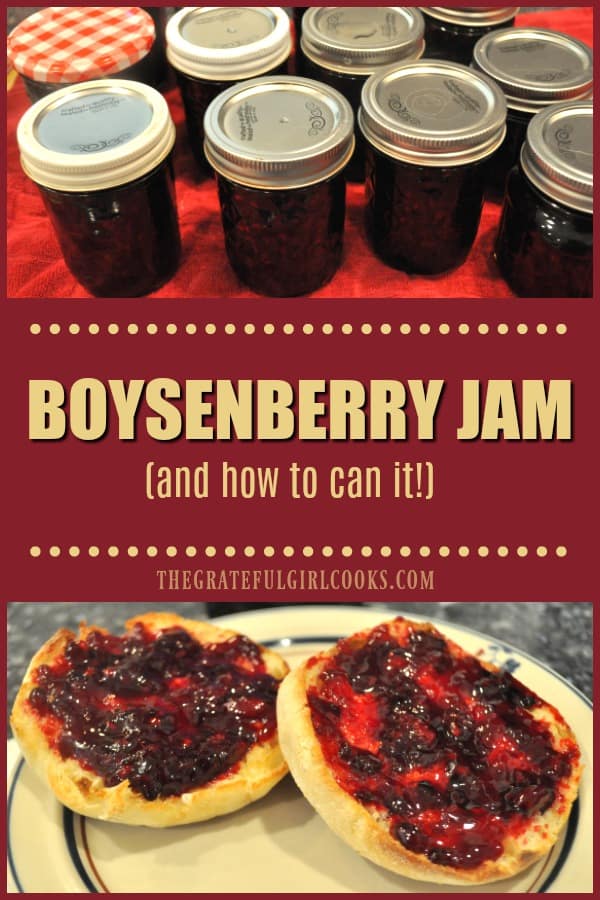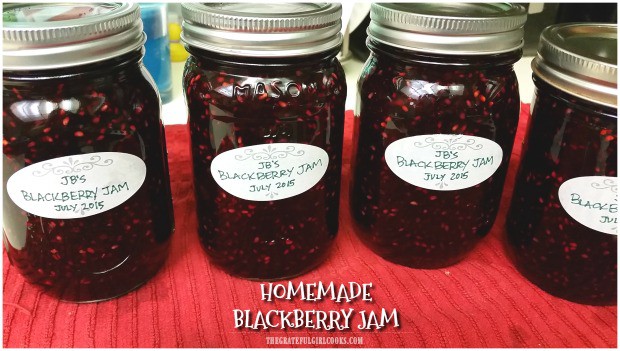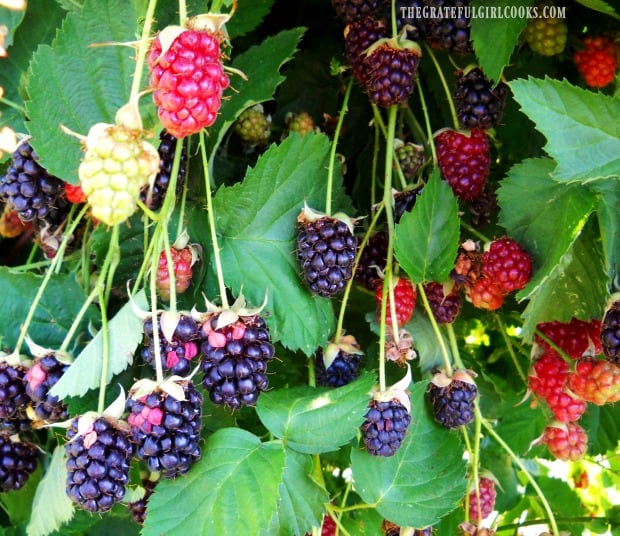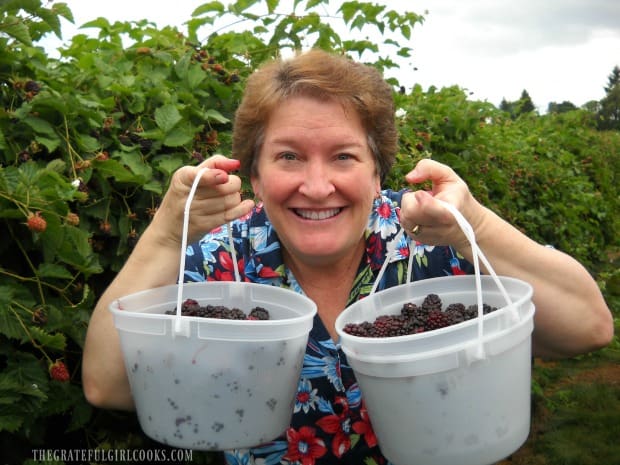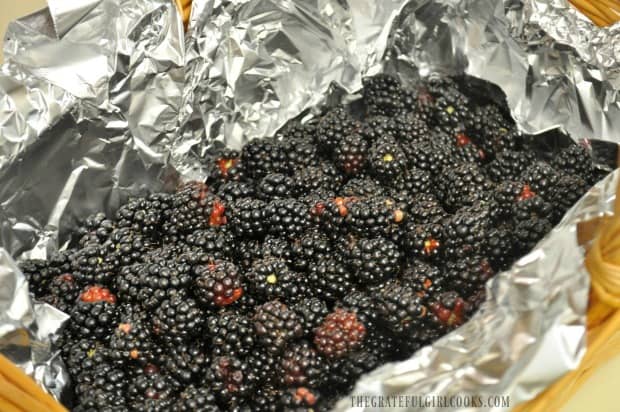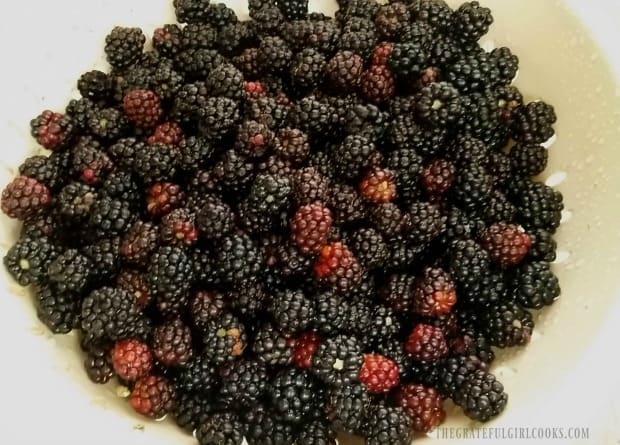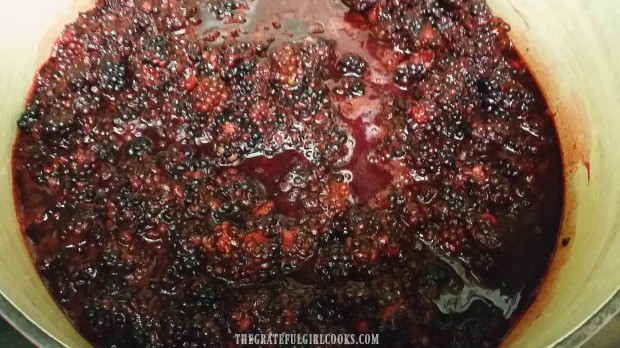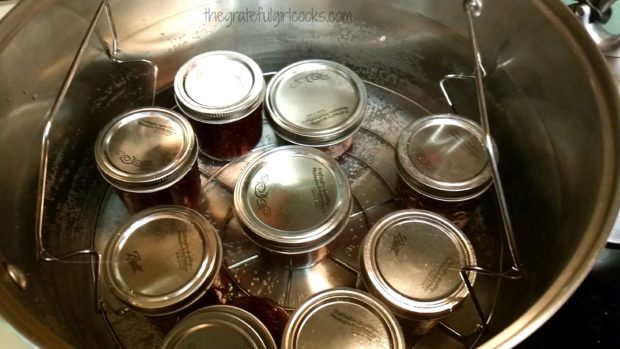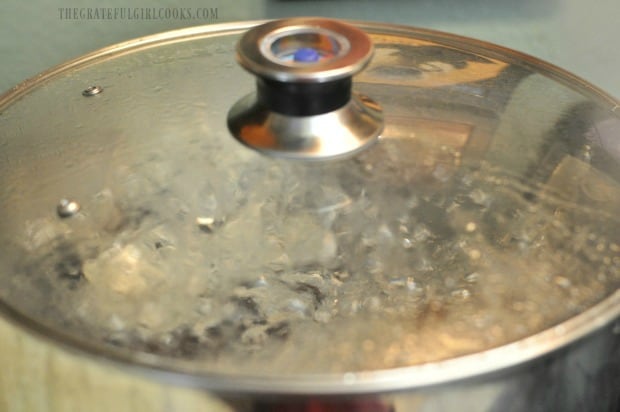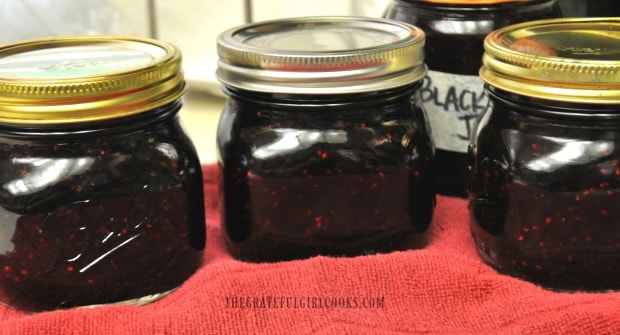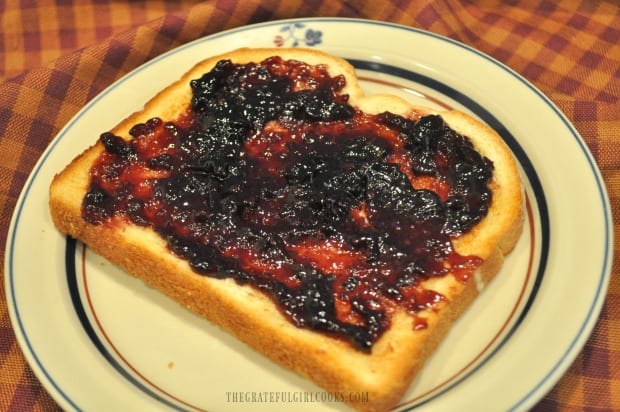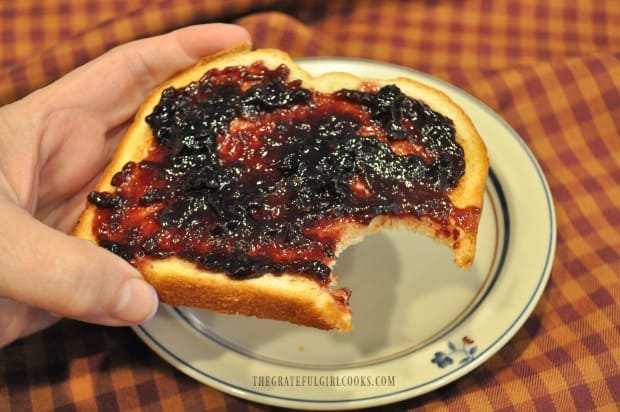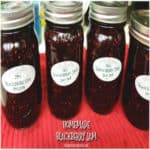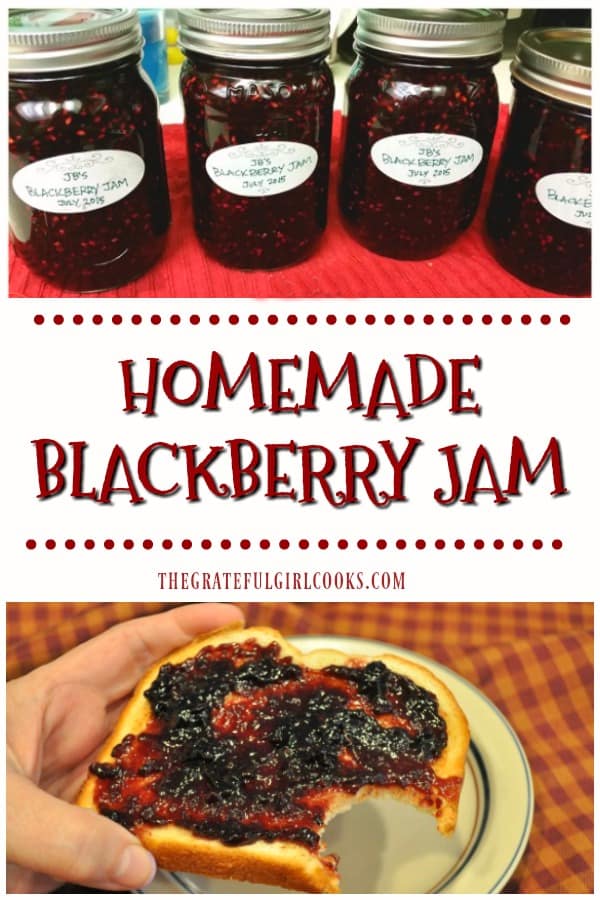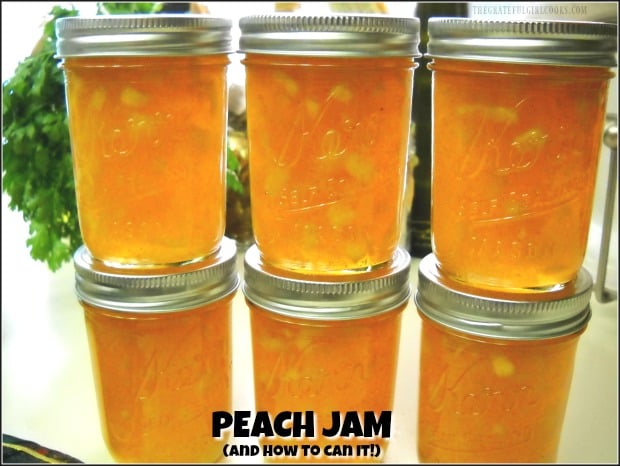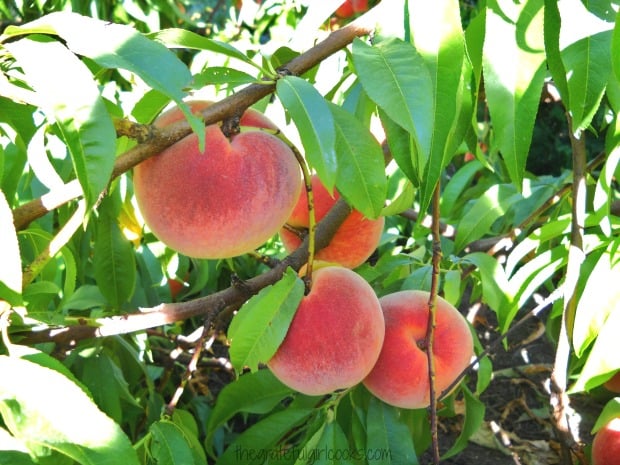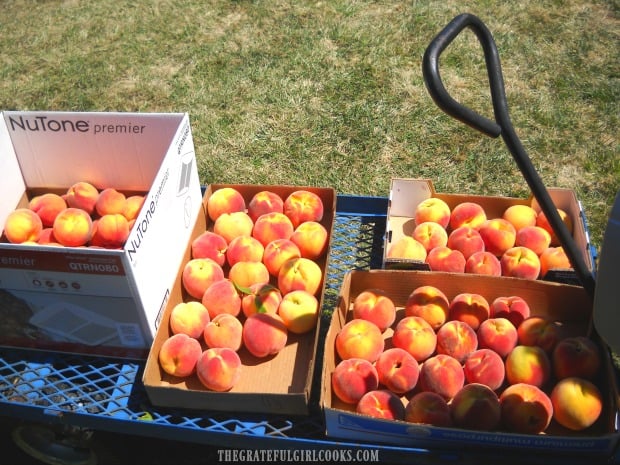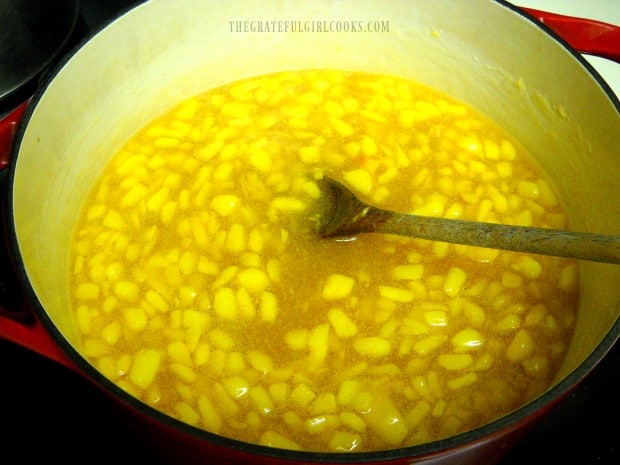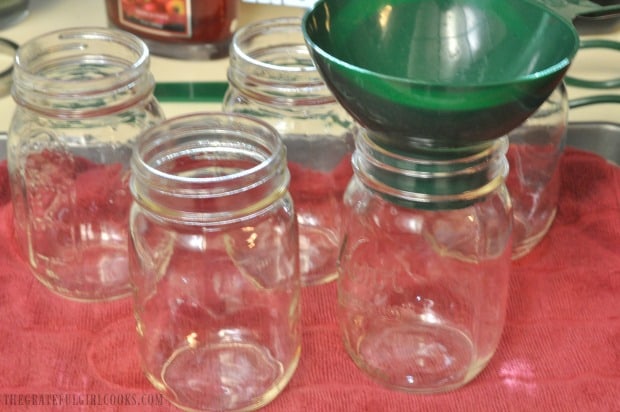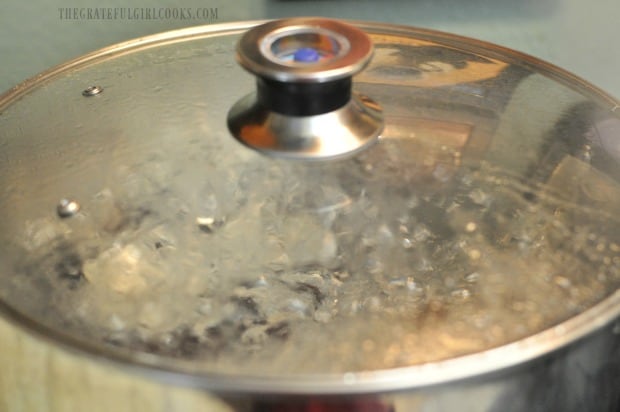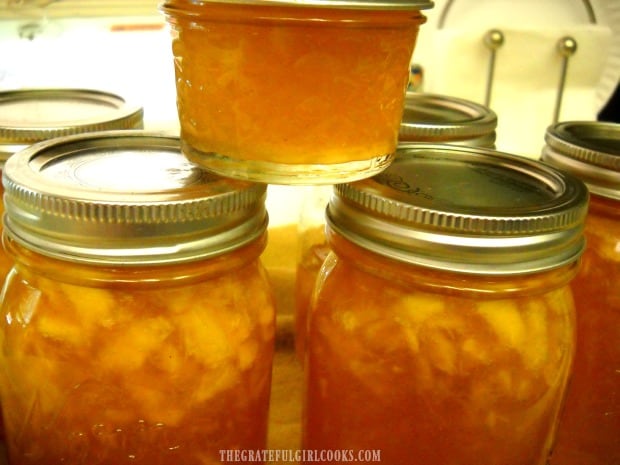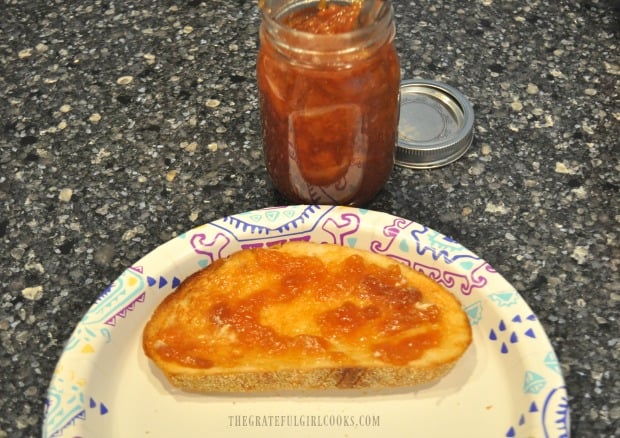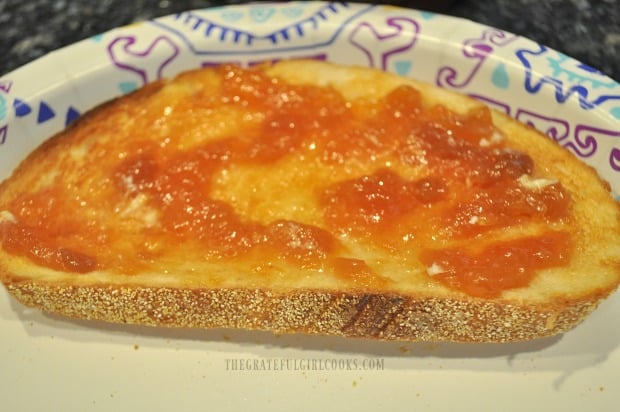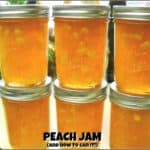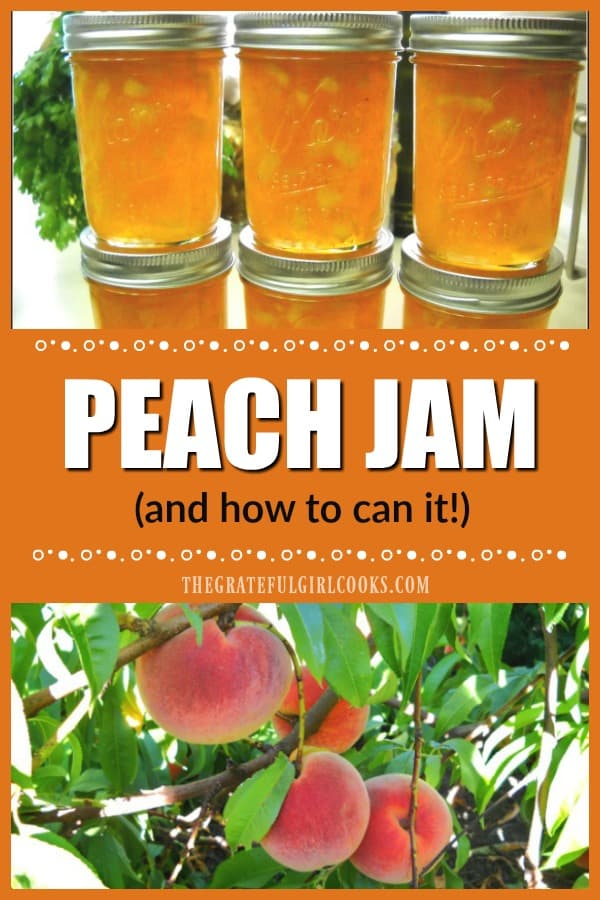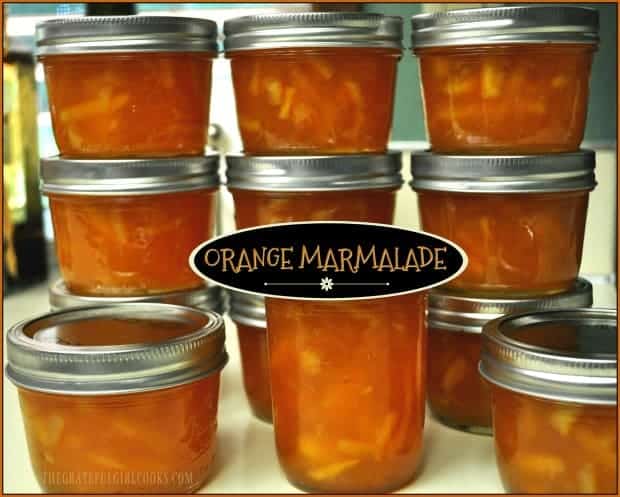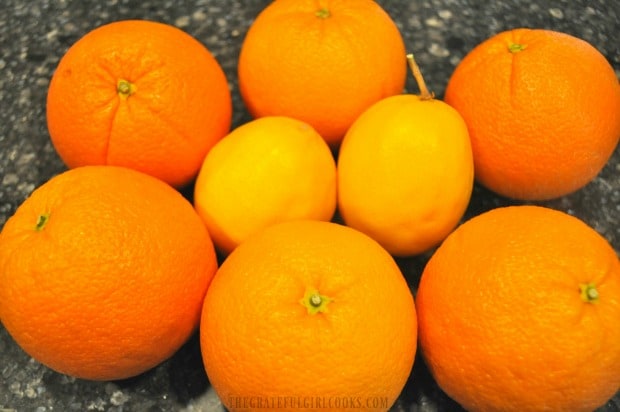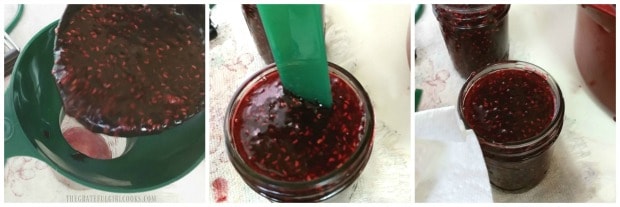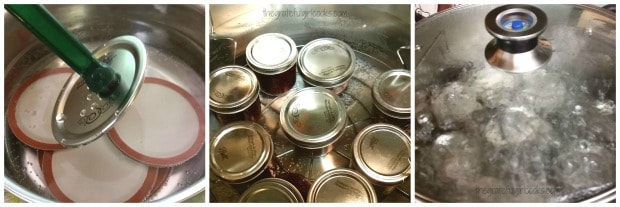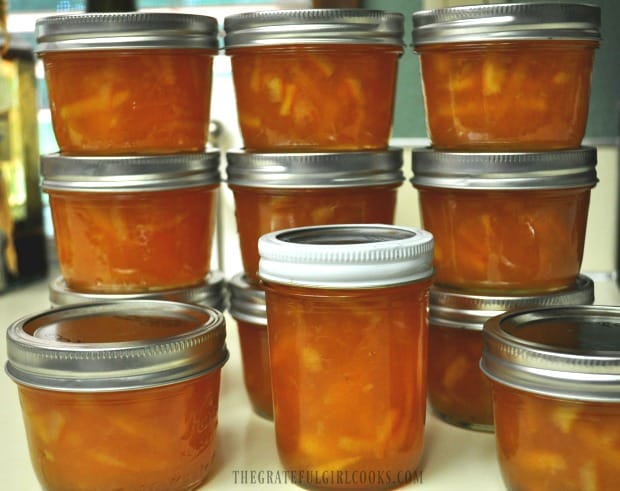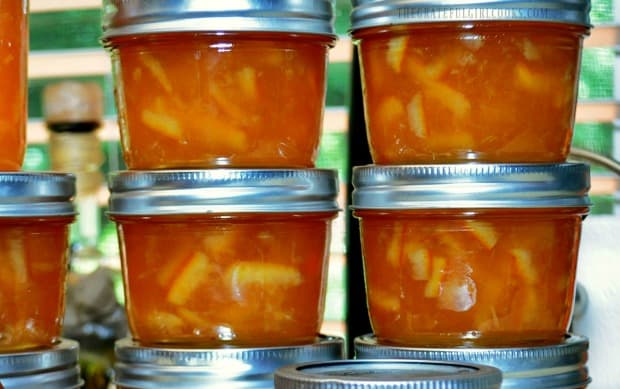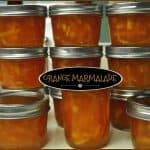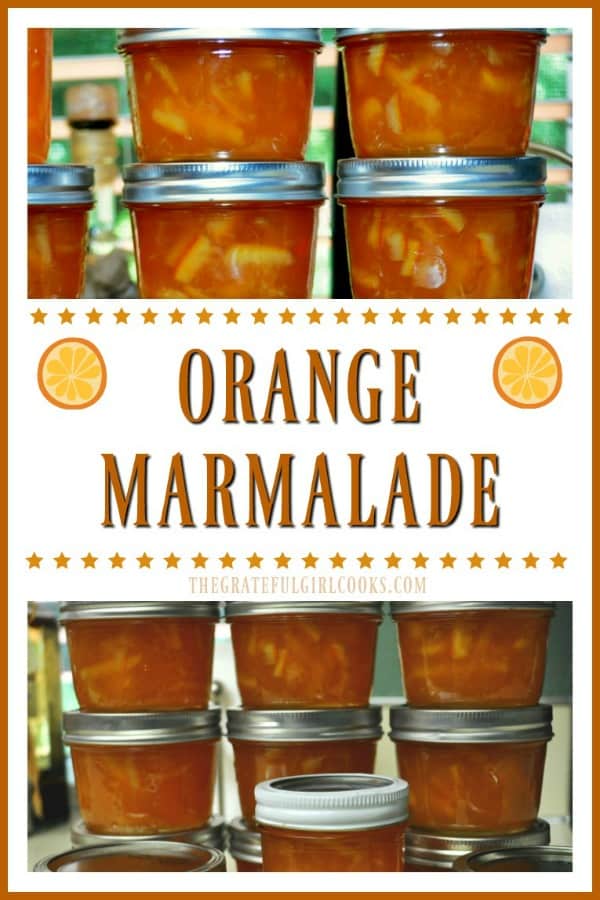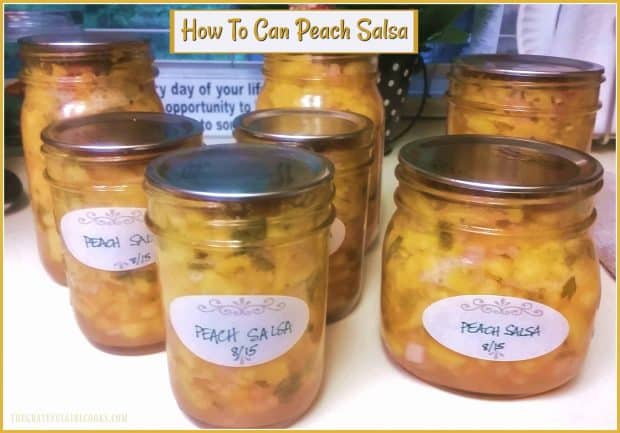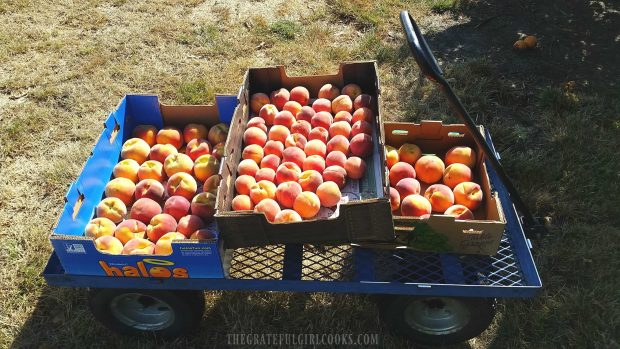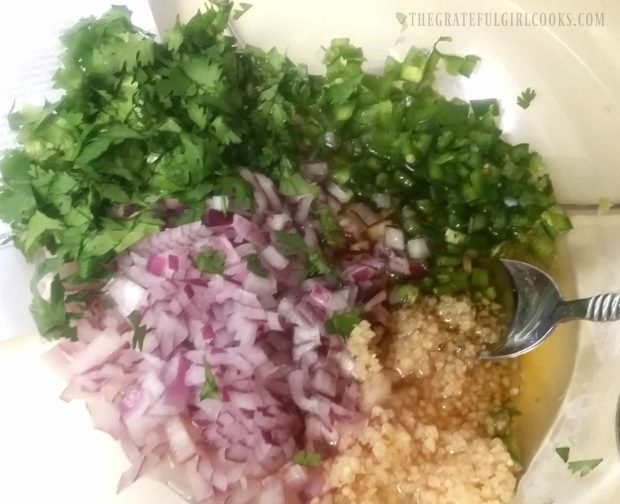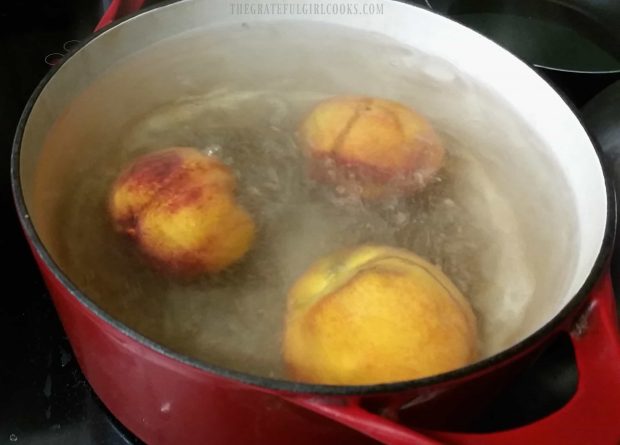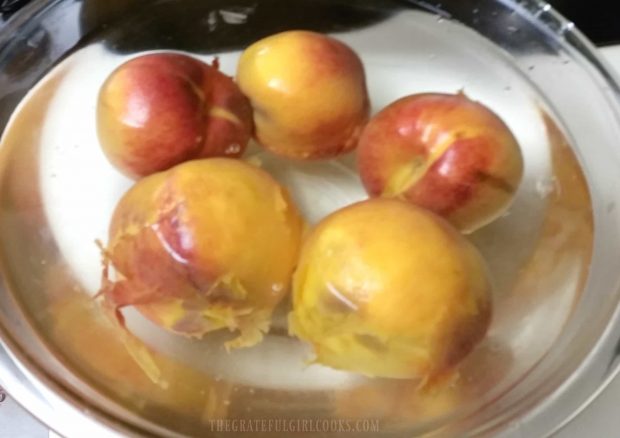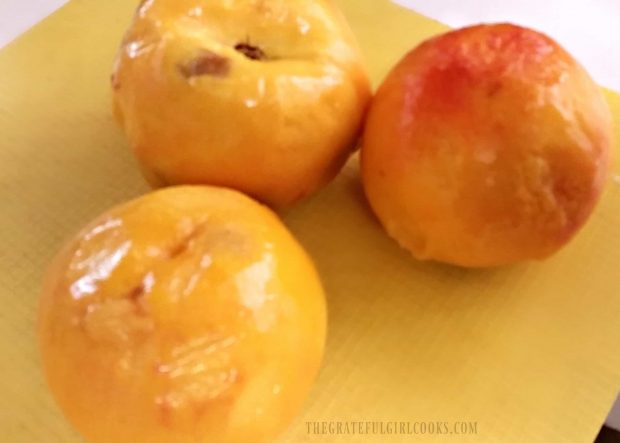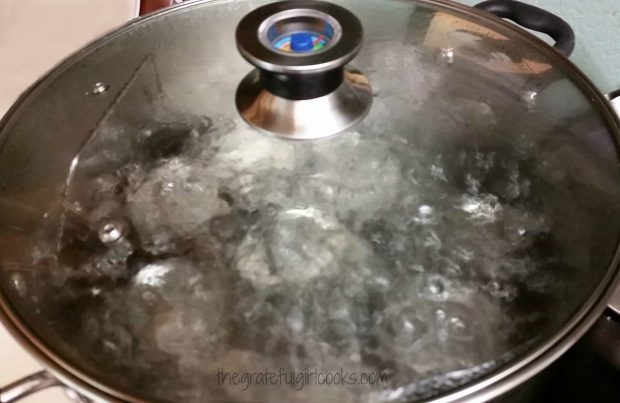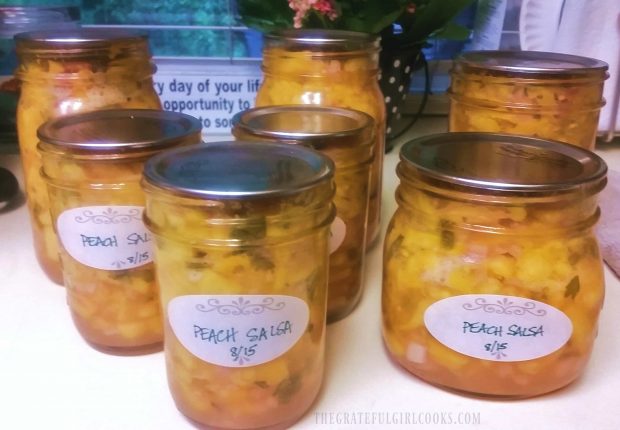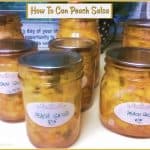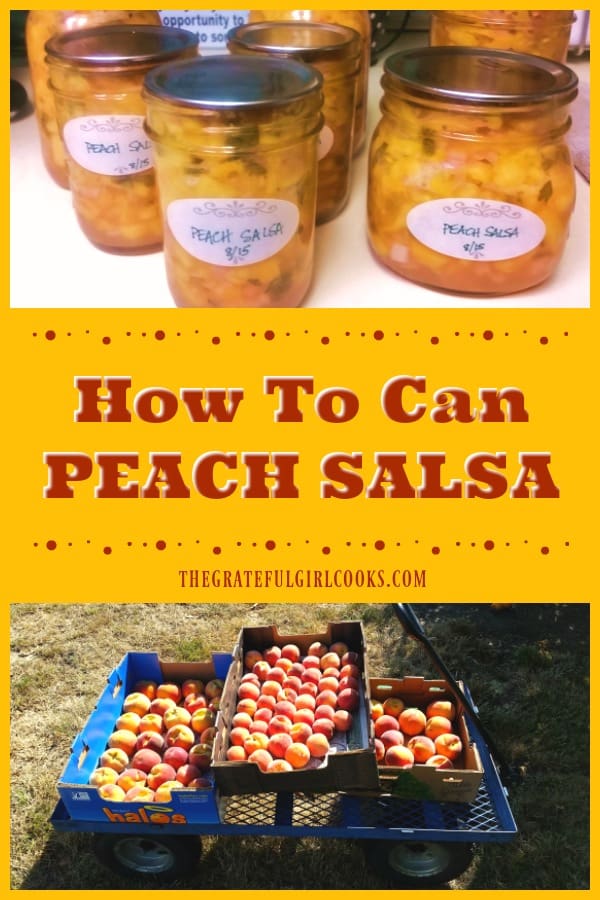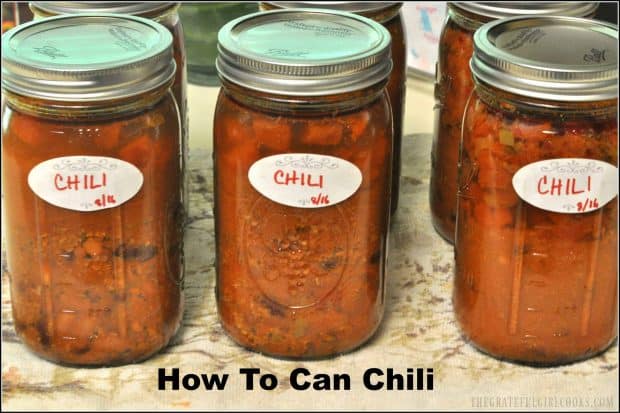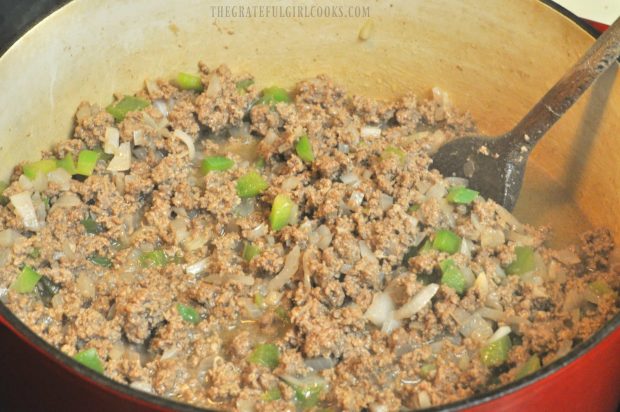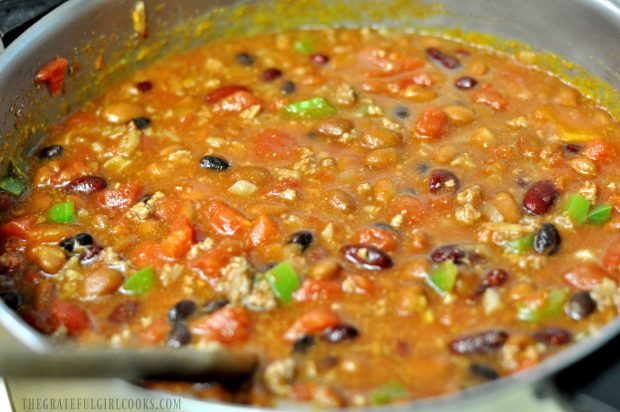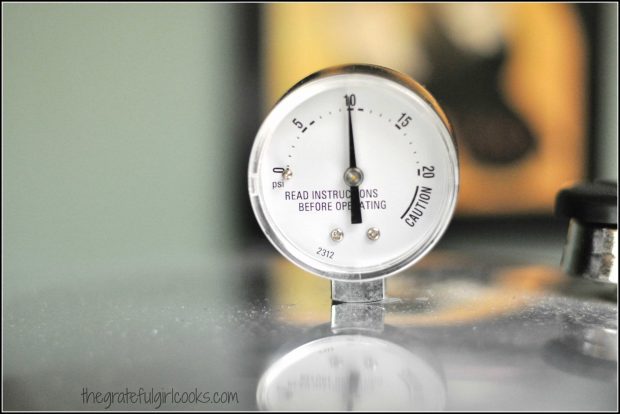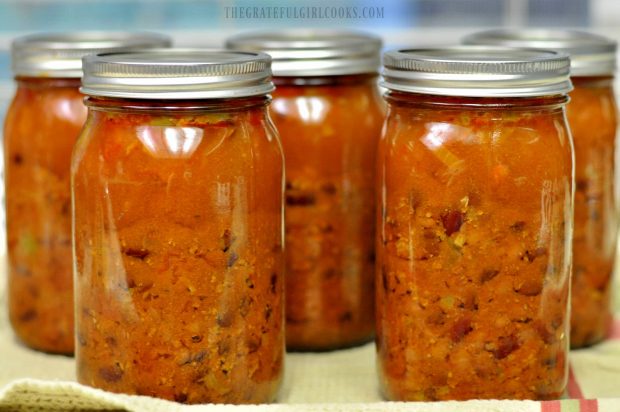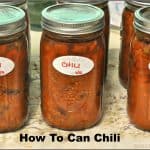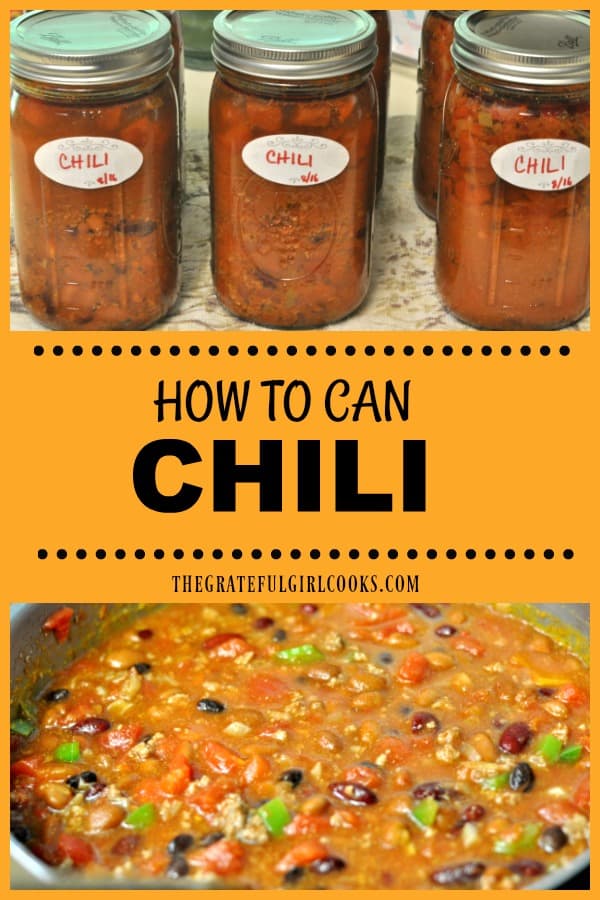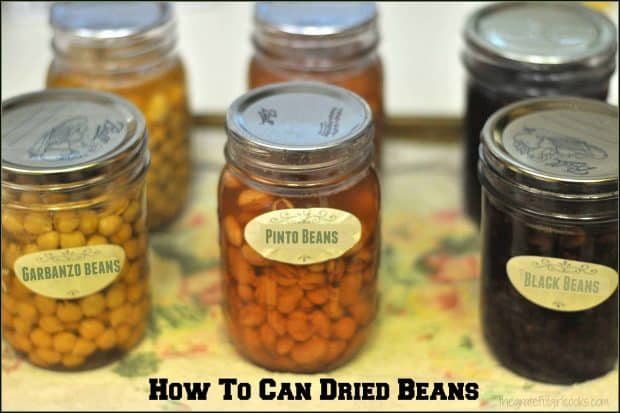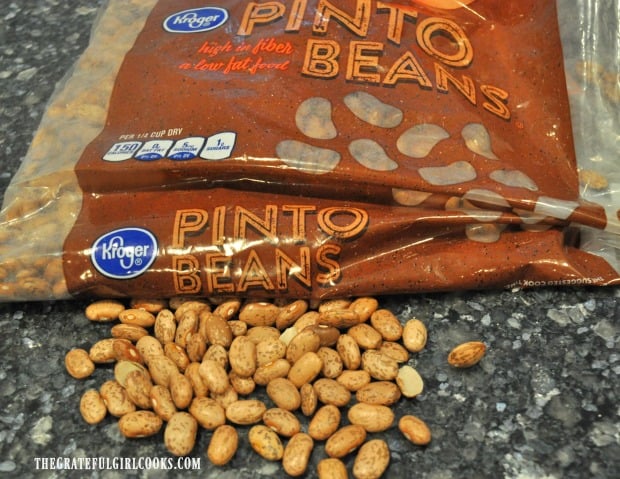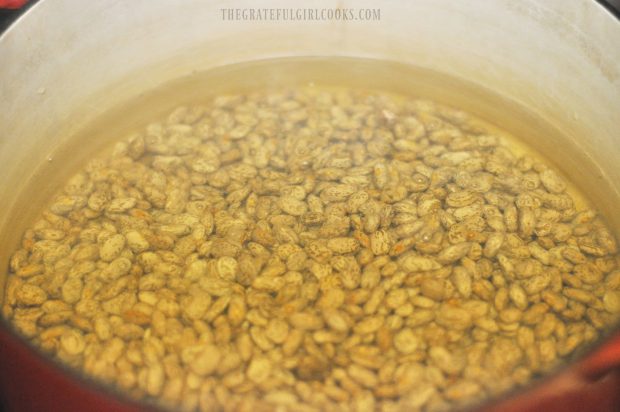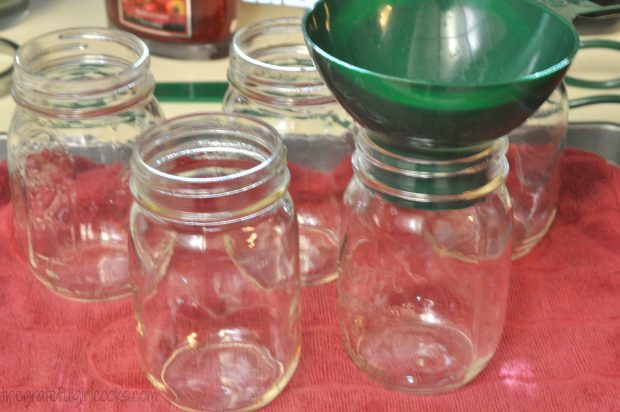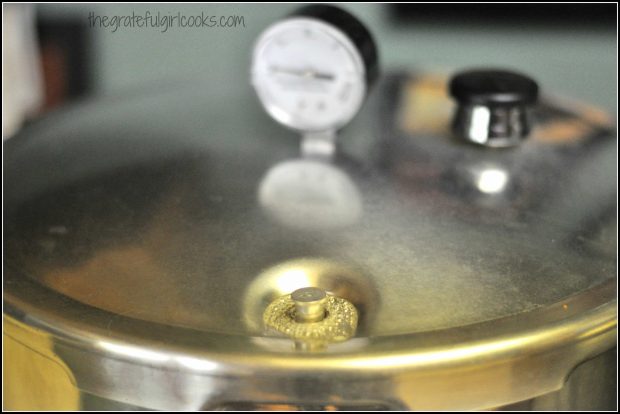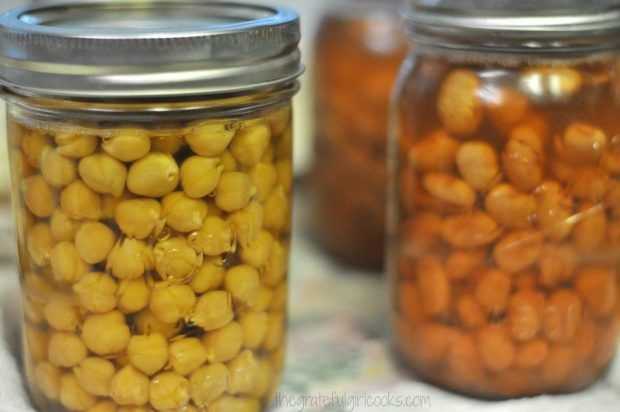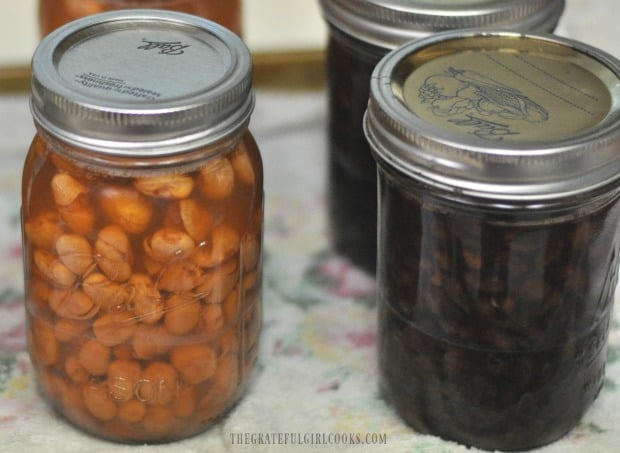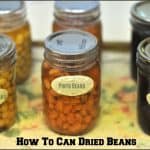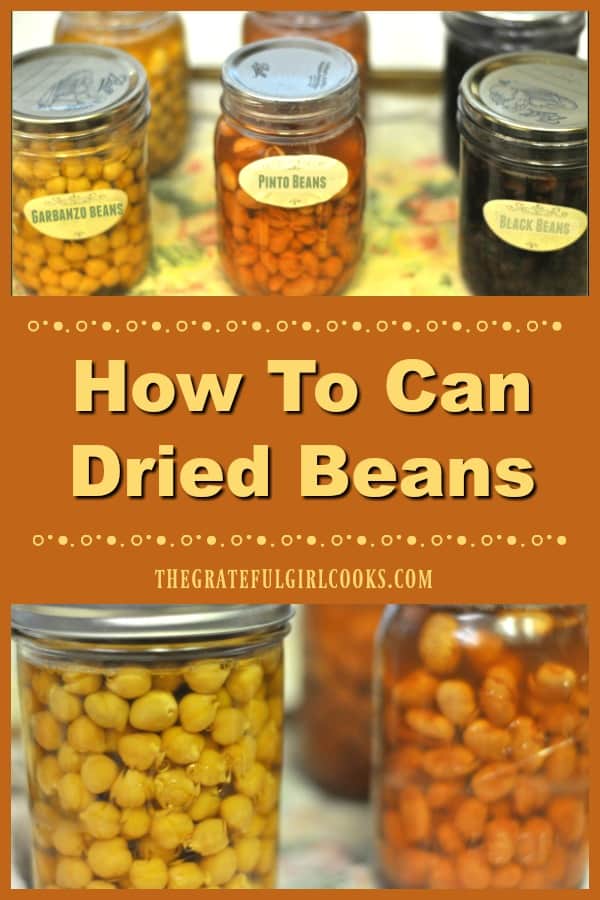Cowboy Candy (also known as candied jalapenos) tastes great on cream cheese covered crackers (as an appetizer), or on grilled burgers or hot dogs! It’s easy to can them for long term storage.
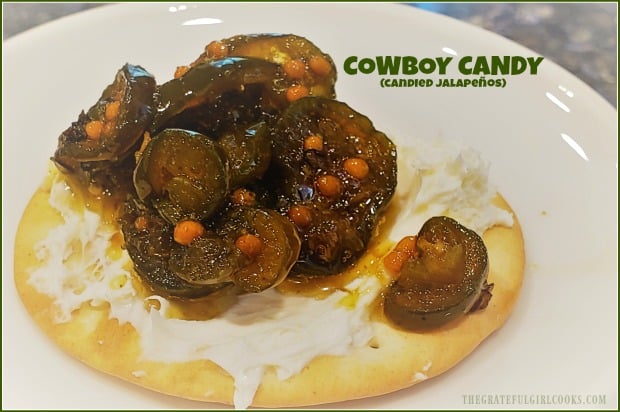
The first time I heard of “cowboy candy”, I wasn’t sure that it was something I would enjoy. I like semi-spicy food, but didn’t know if I could handle candied jalapenos! Boy… was I wrong! It is definitely NOT too spicy at all, is actually sweet, and is a FABULOUS appetizer!
This recipe for cowboy candy is preserved for long term storage by canning it through a water bath process (only takes 15 minutes of cooking time).
Scroll Down For A Printable Recipe Card At The Bottom Of The Page
How Much Cowboy Candy Does This Recipe Make?
The recipe as written below, makes 2 pints of this delectable treat, which comes out to about 64 Tablespoons of cowboy candy total! One Tablespoon is a great topping for a cream cheese topped cracker, so you can see how a couple jars of cowboy candy will go far!
It is also very easy (and recommended) to double or triple this recipe, so you can have LOTS of jars of candied jalapenos in the pantry to serve as a quick fix appetizer! Guess what? Cowboy candy is also wonderful as a topping for grilled hamburgers or hot dogs! YUM!
So How Do I Make Cowboy Candy?
Prepare canning jars and water bath canner, according to USDA canning guidelines. Very basically, you will need to sterilize jars and flat lids, place a rack on the bottom of the canner (to keep jars off bottom), and bring the water in the canner to a simmer.
Thinly slice the jalapeno peppers. You “might” want to wear gloves for this part, but if you don’t, be sure to wash hands thoroughly after slicing, and do not rub your eyes… just sayin’.
When I took these photos several years ago, I was ONLY making 2 pints, because it was my first time trying this particular recipe, and I wanted to make sure we liked the cowboy candy before making more.
Make The Sauce For The Cowboy Candy
In a large pan, bring the apple cider vinegar, sugar, mustard seed, garlic powder, turmeric, celery seed, and cayenne pepper to a boil, on medium heat. Once the mixture begins boiling, turn the heat down to low, and simmer the syrup for 5 minutes.
Add all of the sliced jalapenos into the syrup, and stir to combine. Continue to cook the cowboy candy on low heat for 5 more minutes.
Canning Jars Of Cowboy Candy For Long Term Storage
Divide the cowboy candy into the hot, sterilized canning jars. To do this, add the jalapenos first, then add any remaining liquid from the pan. Fill the jars, being sure to leave 1/4″ headspace on each jar. Insert a plastic utensil a couple of times into each jar, to remove any air bubbles. Wipe the jar rims with a moist towel or cloth to remove excess residue, add a prepared flat lid, and then add the screwband, tightening to fingertip tightness.
Place jars onto rack in canner and make sure there is enough simmering water to cover the top of each jar by 1-2 inches. Process the cowboy candy jars for 15 minutes, after the water comes to a gentle, rolling boil.
Once you have finished canning the jars of cowboy candy, carefully remove each jar from the boiling water using canning tongs.
Place boiling hot jars onto a dish towel (placing them directly on counter could crack the jars due to temperature variances). Let the jars cool for at least 8 hours before disturbing them. Wipe jars clean, label them, test the seal to make sure the jars have sealed correctly, and store in pantry.
Serving Cowboy Candy As An Appetizer
If you want to serve these candied jalapenos as a wonderful appetizer or snack, simply spread some cream cheese (whipped or regular) onto a cracker, and top it with a Tablespoon of cowboy candy. Take a big bite, and enjoy!
I really hope you will try this delicious recipe for cowboy candy! It is SO GOOD when served as an appetizer (so easy, too), and is a delicious topping on a juicy hamburger or grilled hot dog! Have a wonderful day, and may God bless you as you journey through it!
Looking For Other Recipes For APPETIZERS?
You can find all of my appetizer AND canning recipes in the Recipe Index, located at the top of the page. A few favorite appetizer recipes include:
Interested In More Recipes?
Thank you for visiting this website. I appreciate you using some of your valuable time to do so. If you’re interested, I publish a newsletter 2 times per month (1st and 15th) with all the latest recipes, and other fun info. I would be honored to have you join our growing list of subscribers, so you never miss a great recipe!
There is a Newsletter subscription box on the top right side (or bottom) of each blog post, depending on the device you use, where you can easily submit your e-mail address (only) to be included in my mailing list.
You Can Also Find Me On Social Media:
Facebook page: The Grateful Girl Cooks!
Pinterest: The Grateful Girl Cooks!
Instagram: jbatthegratefulgirlcooks
Recipe Source: www.sbcanning.com/2010/10/cowboy-candy-check-this-out.html
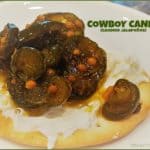
Cowboy Candy (also known as candied jalapenos) tastes great on cream cheese covered crackers or burgers! It's easy to can them for long term storage.
- 1 pound fresh jalapeños , sliced thin
- 2/3 cup apple cider vinegar
- 2 cups granulated sugar
- 2 Tablespoons mustard seed
- 1 Tablespoon garlic powder
- 1/4 teaspoon turmeric
- 1/4 teaspoon celery seed
- 1/4 teaspoon cayenne pepper
Prepare canning jars and water bath canner, according to USDA canning guidelines. Very basically, you will need to sterilize jars and flat lids, place rack in canner, and bring the water in the canner to a simmer.
Thinly slice the jalapeño peppers. You "might" want to wear gloves for this part, but if you don't, be sure to wash hands thoroughly after slicing, and do not rub your eyes... just sayin'.
In a large pan, bring the apple cider vinegar, sugar, mustard seed, garlic powder, turmeric, celery seed, and cayenne pepper to a boil, on medium heat. Once the mixture begins boiling, turn the heat down to low, and simmer the syrup for 5 minutes. Add all of the sliced jalapeños into the syrup, and stir to combine. Continue to cook the cowboy candy on low heat for 5 more minutes.
Divide the cowboy candy into the hot, sterilized canning jars. To do this, add the jalapeños first, then add any remaining liquid from the pan. Fill the jars, being sure to leave 1/4" headspace on each jar. Insert a plastic utensil a couple of times into each jar, to remove any air bubbles. Wipe rims clean, then add the prepared flat lid and screwband. Tighten screwband to fingertip tightness. Place jars onto rack in canner and make sure there is enough simmering water to cover the top of each jar by 1-2 inches. Process jars for 15 minutes, after the water comes to a gentle boil. Once you have finished processing the jars, carefully remove each jar from the boiling water using canning tongs. Place hot jars onto a dish towel (placing them directly on counter could crack jars due to temperature variances). Let jars cool for at least 8 hours before disturbing them. Wipe jars clean, label, and test the seal to make sure the jars have sealed correctly, and then store in pantry. Enjoy!
